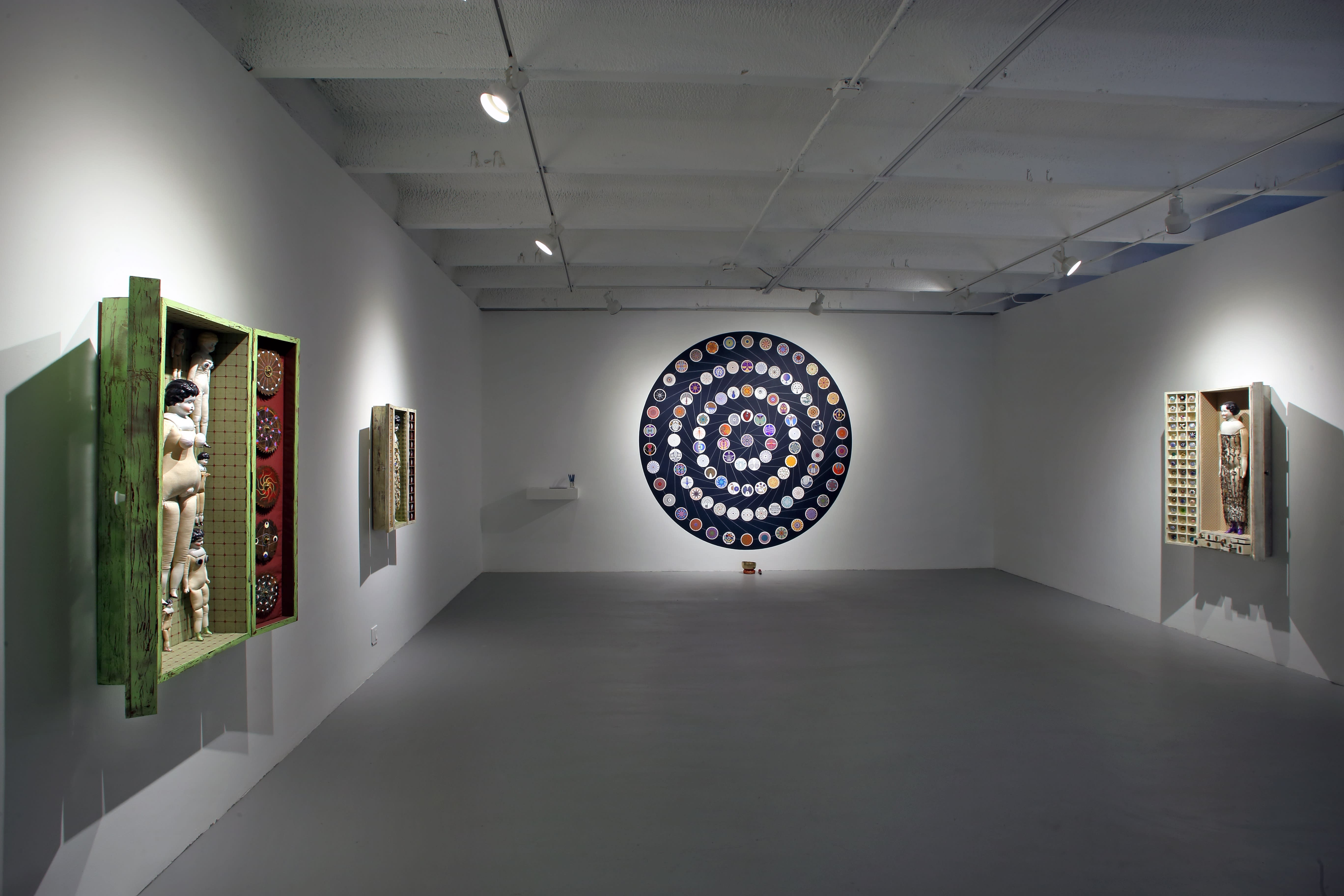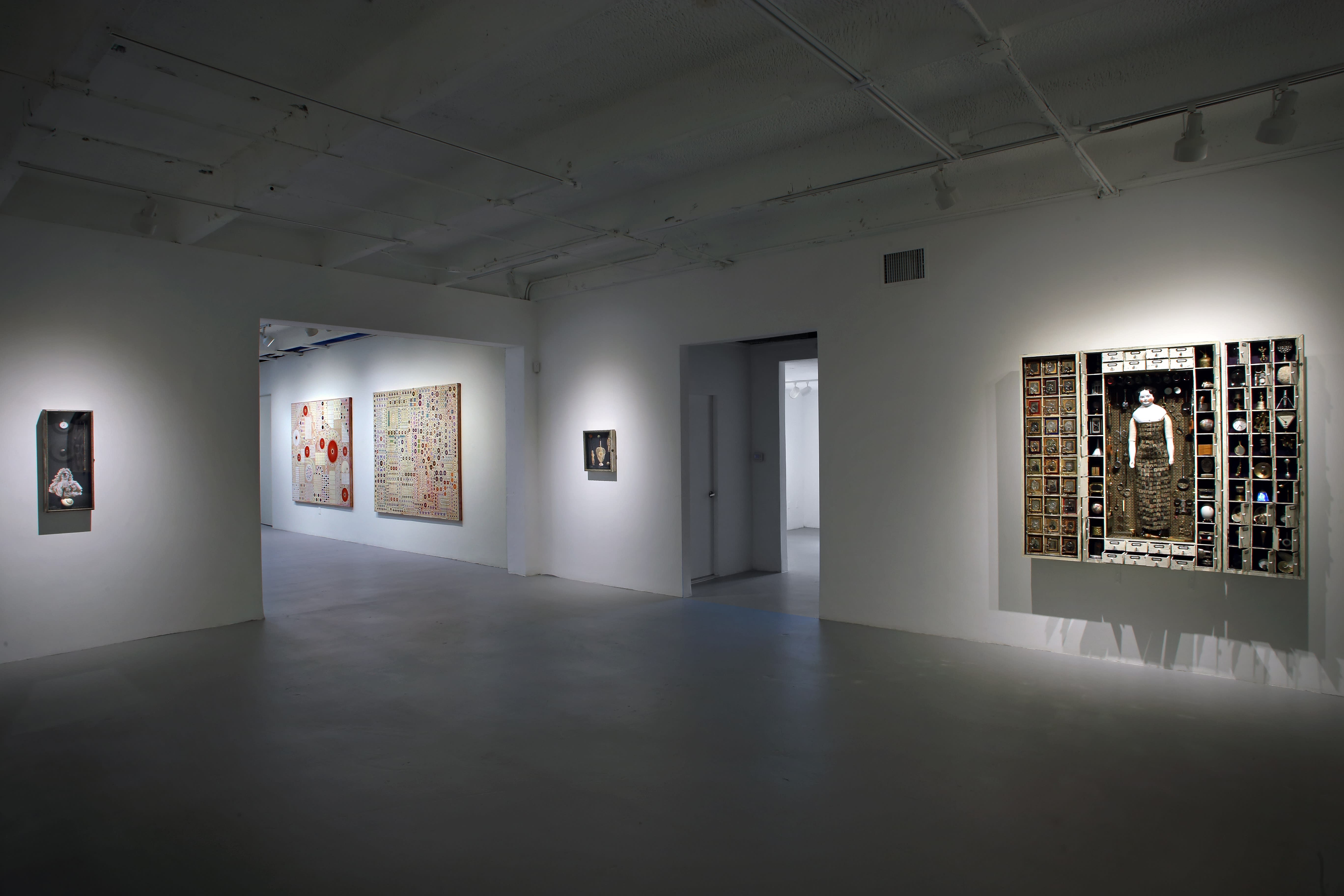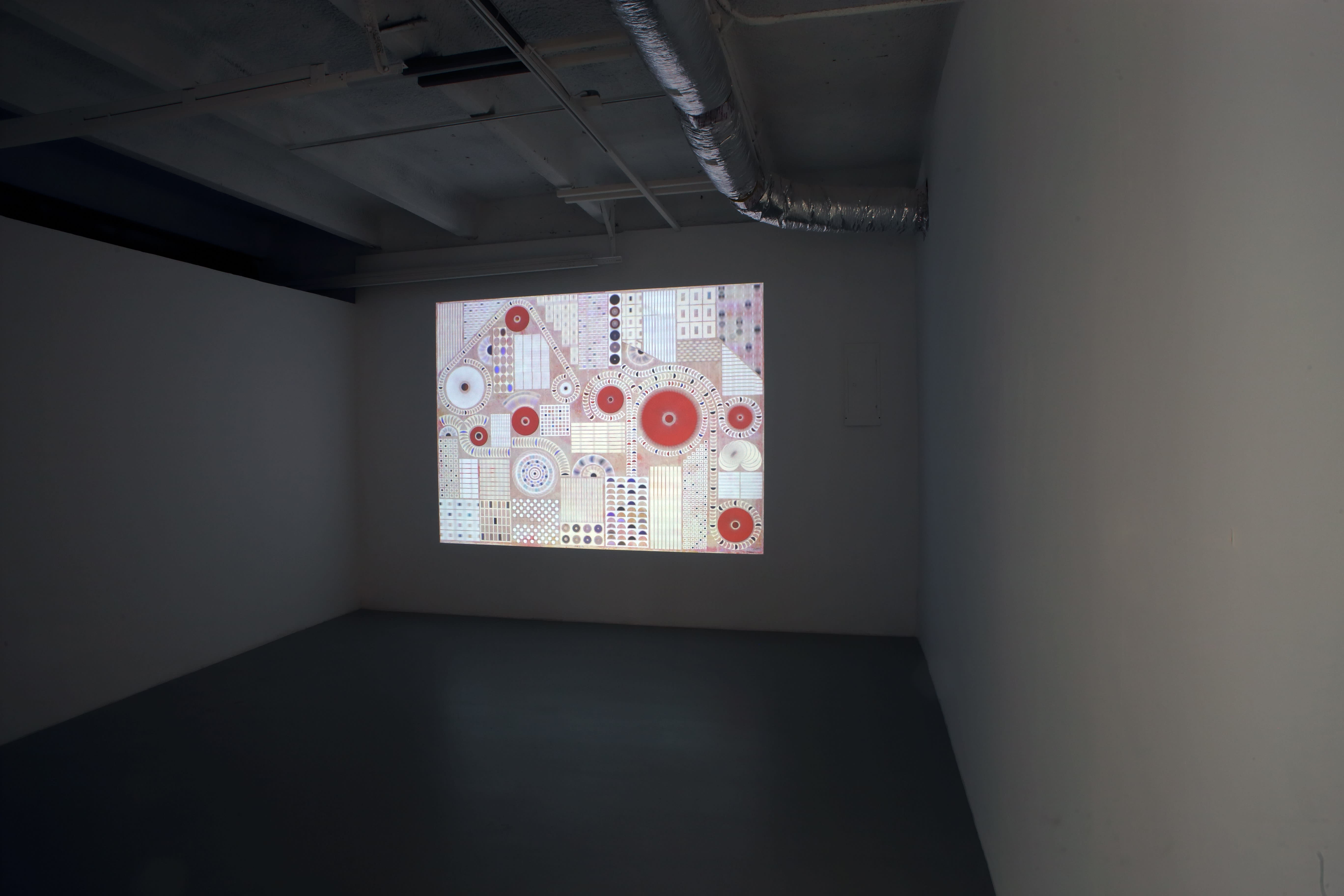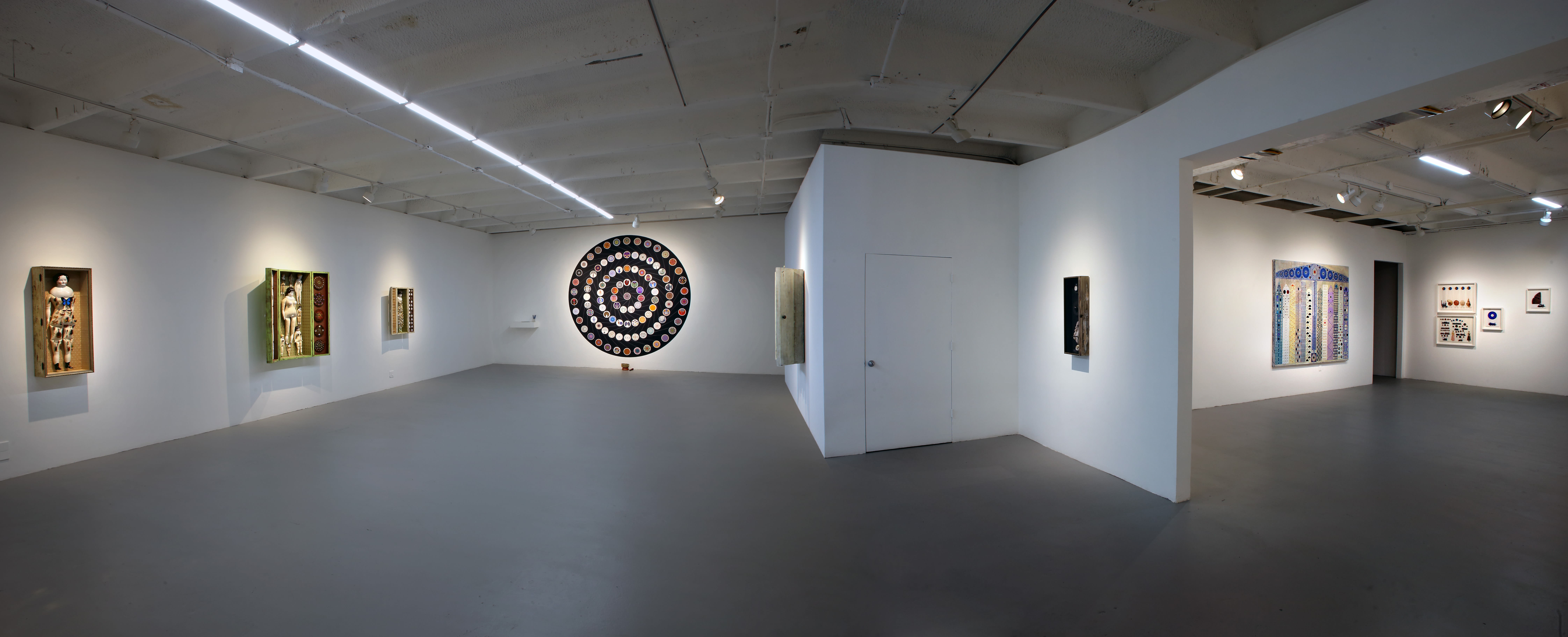The Life of Meanings is an exhibition of immersive character. Each work represents a niche of infinite micro-universes, and like a matryoshka (“little matron”), it behaves as a container of concepts within other concepts. Carlos Estévez has left space to draw his identity through discoveries, dreams, cosmogonic concerns and existential questions. I would also dare to say that it constitutes a generational statement of the artist. Both he and his contemporaries experienced mental migration before physical migration, and in the face of adverse political circumstances, many opted for subterfuge as a discursive method. In this way, the symbol, the metaphor and the metonymy have been resources that have frequently accompanied his poetics throughout these years. That context made him an insatiable artist and he found insights in medieval literature, illuminated manuscripts, treatises on ancient philosophy and esoteric books to build his referential and spiritual universe.

The conciliation of this knowledge found meaning in his great admiration for the wunderkammer, cabinets of curiosities or wonder-rooms, which emerged in Europe in the mid-sixteenth century as repositories of all kinds of wonderful and strange objects: antiques, objects of Natural History (such as stuffed animals, fossils, dried insects and herbs) and even works of art. Combining specimens, diagrams, and illustrations from many disciplines, these collections marked the intersection of science and superstition, and have been considered the forerunners of museums. In the beginning, a cabinet was simply a piece of furniture where small but precious objects were kept. At the end of the fifteenth century and during the sixteenth this word acquires its second meaning, being applied to rooms generally of small proportions where rare and valuable pieces were deposited.

A large part of Carlos Estévez's production bases its aesthetics on the idea contained in these cabinets. For this reason, the exhibition shares multiple media, such as video-animation, assembly, interactive installation, painting, drawing and collage. It is presented as a great self-referential wunderkammer with an impact on collective memory. Museographically we have divided the gallery into three rooms (or cabinets). The first is dedicated to the video-animations of some of his paintings, which recall the aesthetics of cinema in its beginnings. The second makes use of the shadows and occasional lighting of the works to reinforce the mystical atmosphere of the works. And the third and last one focuses on revealing the dynamics of time and its collapse into the patterns of an imagined city. And somehow, the last room relates to the video loop in the first.

The human being goes through life accumulating knowledge and memories in the form of objects. In the assemblages created by the artist, these are organized thematically and are almost always centered around the figure of the woman embodied in a porcelain doll: the woman seen as a delicate ornament and bearer of beauty and pain. Although they are now the leading images of these assemblages, they were silenced at the time when the cabinets were considered sanctuaries reserved only for the owners and their closest friends. Women only accessed them for their care and cleaning. On the other hand, Estévez's cabinets have the charming and dissonant aura of furniture preserved but witness to the passage of time. And this factor is also present in his work as a hallmark: time and the human transformation caused by it. The interiors of these cabinets are a window to discoveries that become vivid, infinite and mystical. The drawers, classified taxonomically, name the objects and their spiritual contents. The use of seven cabinets surrounding the Cosmic Tarot interactive installation automatically personifies these assemblages: they come to life, they become spectators as well. And therefore, this work acquires meaning only if the spectator activates it by identifying their fate by the reading of a letter chosen by chance. The theatrical environment -something that the artist has handled previously in other pieces- is taken up at a curatorial level with the idea of extending its uses to a more global and immersive area for the viewer. Generally, this concept in his work has been related to the roles that people play in everyday life to maintain a certain posture or appearance. As a result of these subversions, these hybrid characters emerge.



The transition from this mystical universe to the reality imagined in his paintings, drawings and collages, provokes the revelation of a world where the succession of time simplifies the processes and loses the detail information that we previously appreciated in the "room of the mystery”, of the gloom. The paintings have been conceived as conceptual maps of contemporary life or what we could theoretically associate with “no-place” -that space of anonymity in which people exchange consumer relationships; this can be an area of transport, market, rest, it is even associated with refugee camps. Basically it is a place stripped of identity, culture, religion. It has been an “anthropological non-place”. The adventure of living in the era of overmodernity or supermodernity has collapsed the ability of human beings to personalize their lives; to control the history, the information, which is too much to misinform. Somehow, this chaotic centralized network has caused these spaces of restlessness to be the places of loss and encounter with our identity, or rather, of Cartesian rewriting of it. Estévez's paintings contain the patterns of human movement superimposed on the trace of time and with them gravitate constellations of drawings-collages like hybrid, rare and exotic inhabitants of those imagined cities.




